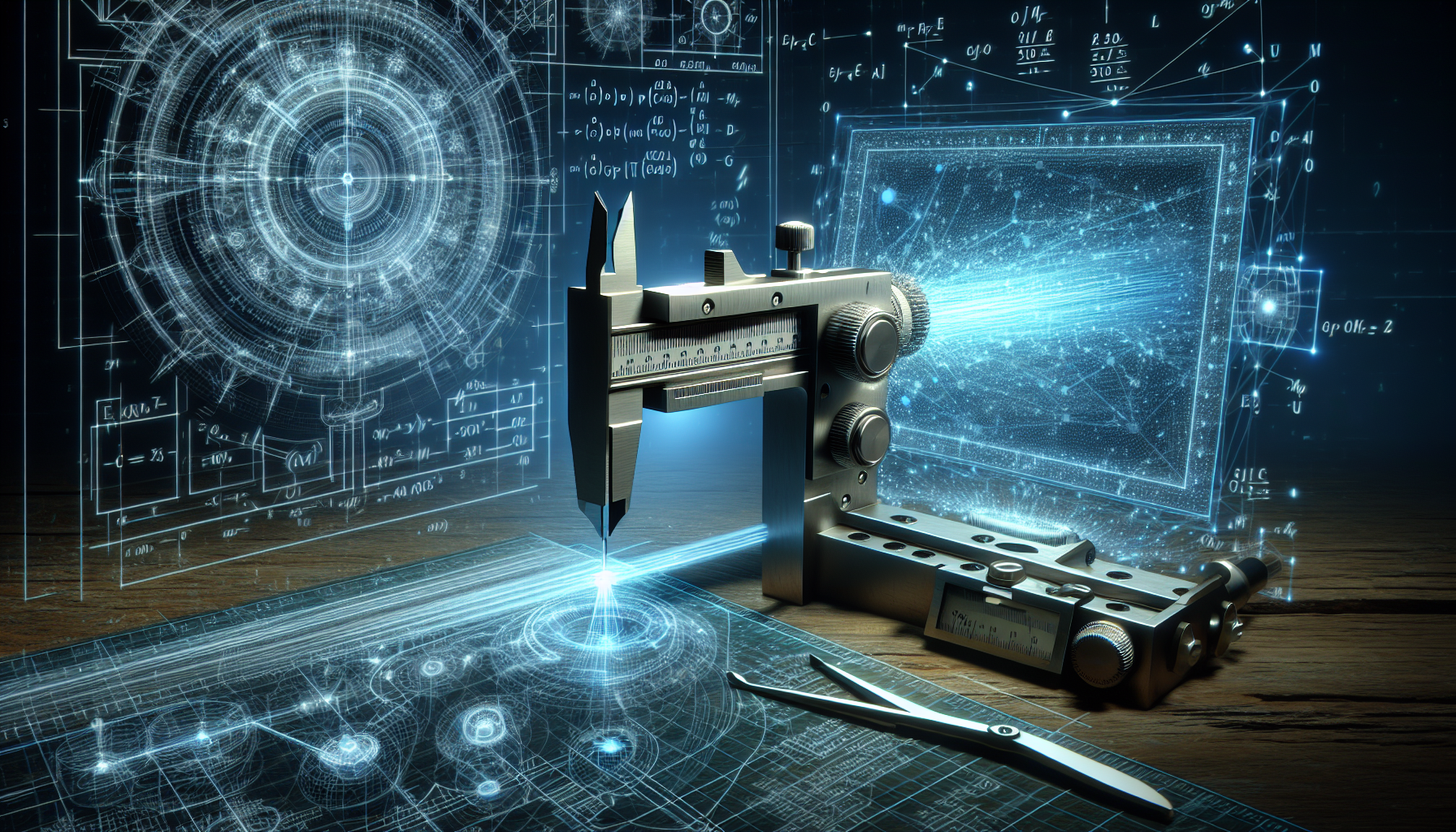
## Improving Metrological Instrument Accuracy with AI-Driven Calibration
Industries such as aerospace engineering, pharmaceuticals, and automotive manufacturing increasingly rely on artificial intelligence (AI) for calibrating metrological instruments. Renowned for its exceptional precision and efficiency, AI is set to transform traditional methods in these pivotal sectors. But how does this technology specifically affect the field of metrology?
### AI’s Contribution to Metrological Instrument Calibration
AI’s integration into metrology—the science of measurement—comes as no surprise given its adaptability and substantial market value. By 2030, AI is anticipated to add as much as $13 trillion to global GDP. Organizations across sectors like manufacturing, automotive, pharmaceuticals, and engineering are starting to harness AI for instrument calibration.
Metrological tools such as micrometers, thermometers, pH meters, scales, and rulers are crucial for the accurate measurement of materials and substances. Precise measurements are vital for producing high-quality products that function as intended. For example, a small measurement error in aviation manufacturing or pharmaceuticals could have catastrophic outcomes.
However, traditional calibration methods are often time-intensive and complex. Aligning an instrument’s readings with a precise reference standard can be challenging, particularly as industries become more digitized. This is where AI can make a substantial difference.
### Methods for Integrating AI Into Calibration Processes
AI holds great promise in the calibration of metrological instruments due to its capability to quickly process large amounts of data and make decisions with minimal human intervention. Below are some ways in which industries can incorporate AI into their calibration processes:
#### Automated Calibration Management
AI can schedule and perform periodic calibrations of equipment, maintaining consistent accuracy without constant human oversight. This is particularly useful for developing new procedures or refining existing ones.
#### Neural-Network-Based Assistants
Decision-makers can utilize neural-network-based assistants to design calibration procedures by inputting standards, measurements, equipment details, and environmental data. These assistants can generate innovative step-by-step calibration processes.
#### Code Automation
Large language models like ChatGPT have shown a 93.33% success rate in solving programming issues, making AI a viable solution for automating calibration procedures. Even if human review is required, the overall process is expedited.
#### Machine Learning in Visual Technology
Companies can integrate machine learning with visual technology or sensors to detect inconsistencies and perform highly accurate calibrations. Once trained, these models can quantitatively calibrate equipment, potentially replacing traditional methods.
### Key Advantages of AI Integration
#### Superior Accuracy
A major benefit of AI integration in calibration is enhanced accuracy. AI eliminates human error, identifies hidden patterns, and consistently surpasses human precision.
#### Elevated Efficiency
AI can significantly enhance productivity. Workers utilizing AI can increase their efficiency by 35%, enabling them to focus on more complex tasks and reduce downtime.
#### Advanced Automation
Generative technology is set to automate around 300 million full-time jobs in the near future. AI streamlines tasks, whether in coding or equipment inspection, thus speeding up their completion.
#### Insight Generation
Generative models, like chatbots, can offer valuable suggestions for process optimization. Team leaders can inquire about timelines, safety precautions, or adherence to standards, thus improving decision-making.
### The Future of Metrological Instrument Calibration
While AI cannot completely substitute human involvement, it can automate a considerable portion of their routine tasks. Companies dependent on metrology should explore AI to streamline and enhance their current processes. As more organizations adopt these technologies, innovative AI-driven calibration solutions will likely emerge.
### Conclusion
AI-powered calibration is revolutionizing metrological practices through exceptional accuracy, efficiency, and automation. As industries continue to digitalize and implement these advanced technologies, the future of metrological instrument calibration is indeed promising.
—
### Q&A Session
**Q1: Which industries gain the most from AI-powered calibration?**
A1: Industries such as aerospace engineering, pharmaceuticals, automotive manufacturing, and general manufacturing benefit substantially from AI-powered calibration due to the need for precise measurements.
**Q2: How does AI enhance the accuracy of metrological instruments?**
A2: AI improves accuracy by eliminating human errors, identifying hidden patterns, and delivering consistently precise measurements.
**Q3: Can AI completely replace humans in calibration processes?**
A3: Although AI can automate many tasks, it cannot entirely replace human involvement. Human oversight is still necessary for reviewing outputs and making critical decisions.
**Q4: How can AI be specifically integrated into calibration procedures?**
A4: Methods include automated calibration scheduling, neural-network-based assistants for procedure development, code automation using language models like ChatGPT, and machine learning in visual technology.
**Q5: How does AI boost calibration process efficiency?**
A5: AI enhances efficiency by automating routine tasks, allowing workers to prioritize more complex tasks and reducing downtime.
**Q6: What role does insight generation play in AI-powered calibration?**
A6: Insight generation from generative models like chatbots helps in optimizing processes, aiding team leaders in making informed decisions regarding timelines, safety, and standards compliance.
For more information on related technologies such as [wireless earbuds](https://lonelybrand.com/blog/wireless-earbuds-extended-battery-life/), [Bluetooth speakers](https://lonelybrand.com/blog/the-best-bluetooth-speakers-for-2024/), or [Apple AirPods](https://lonelybrand.com/blog/apple-headphones-timeline/), visit Lonelybrand.com.
